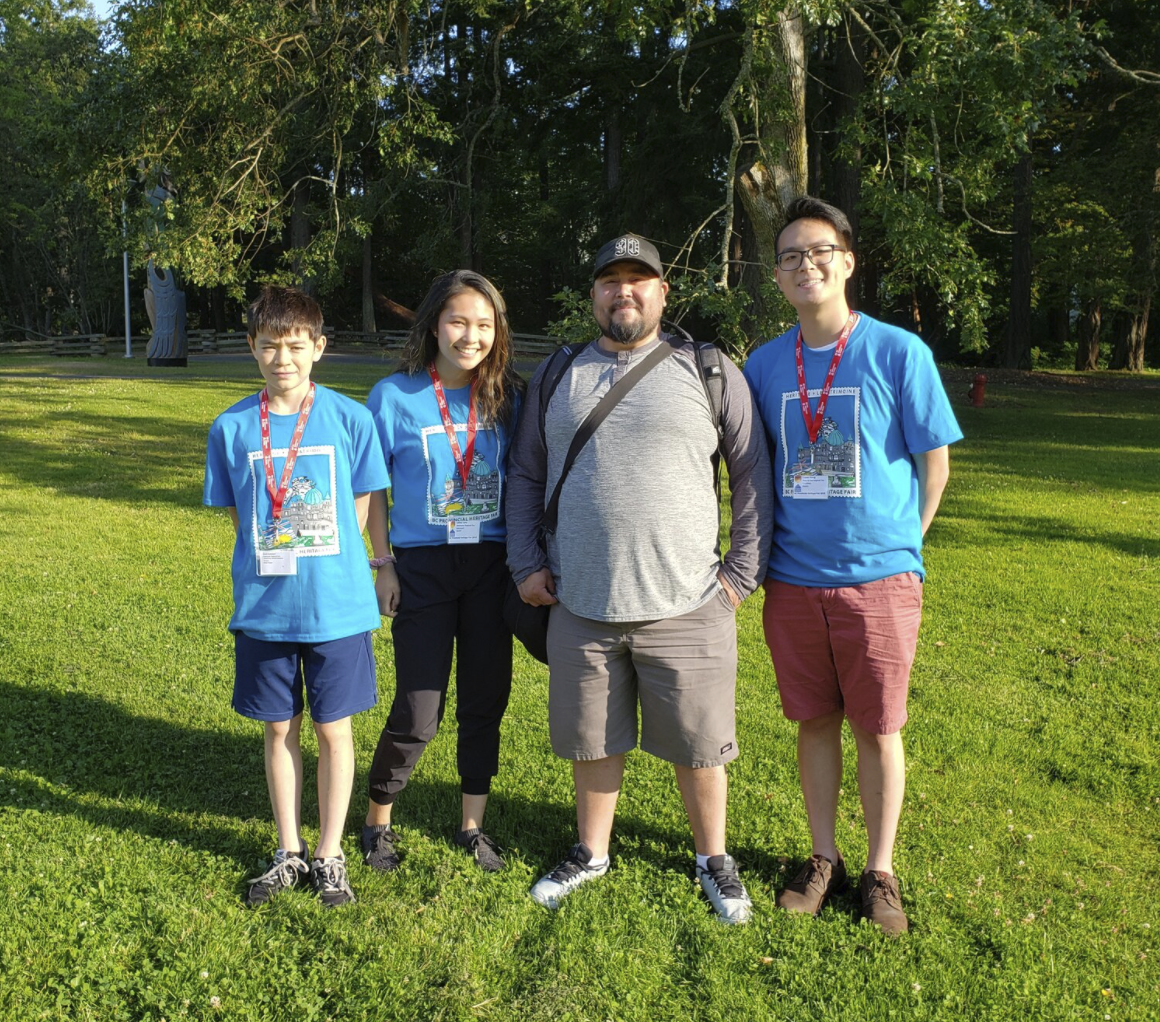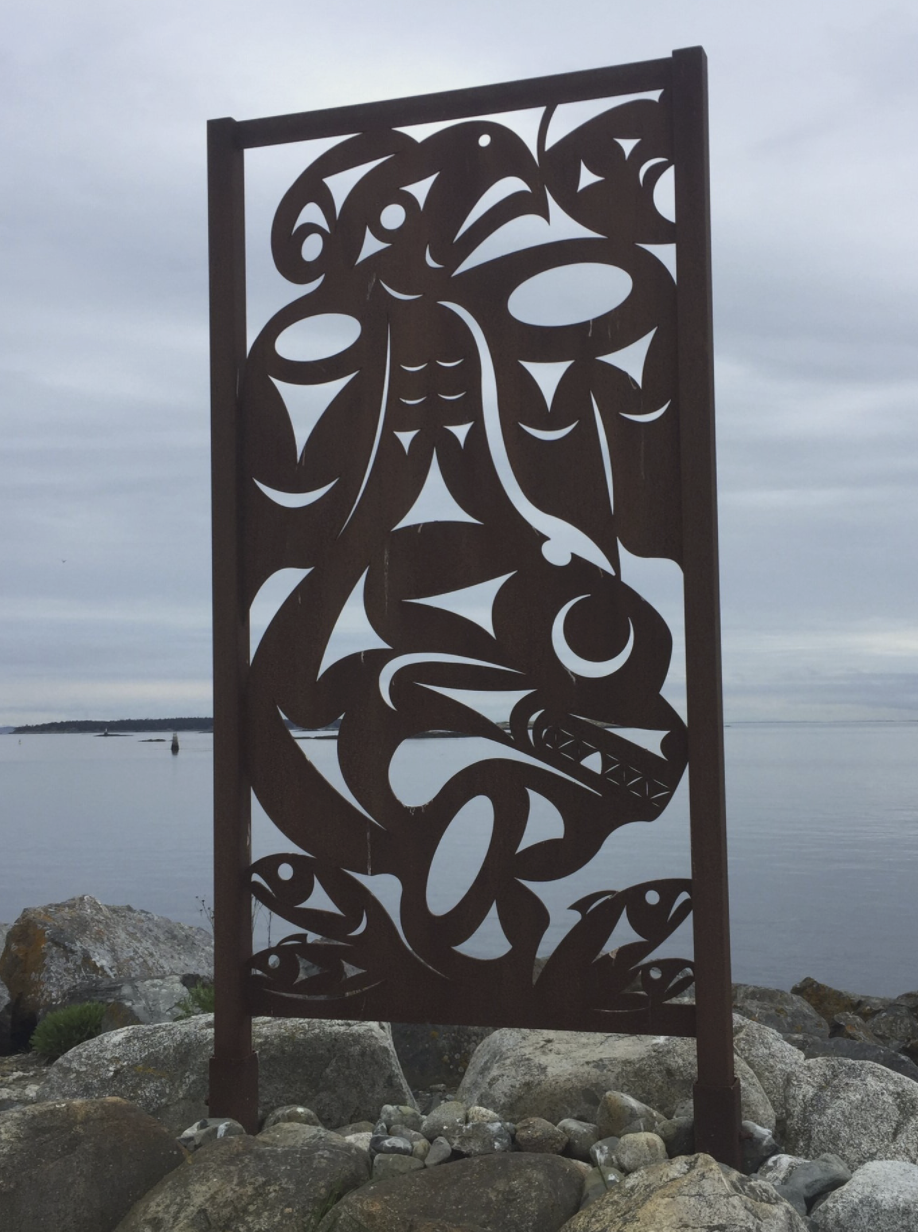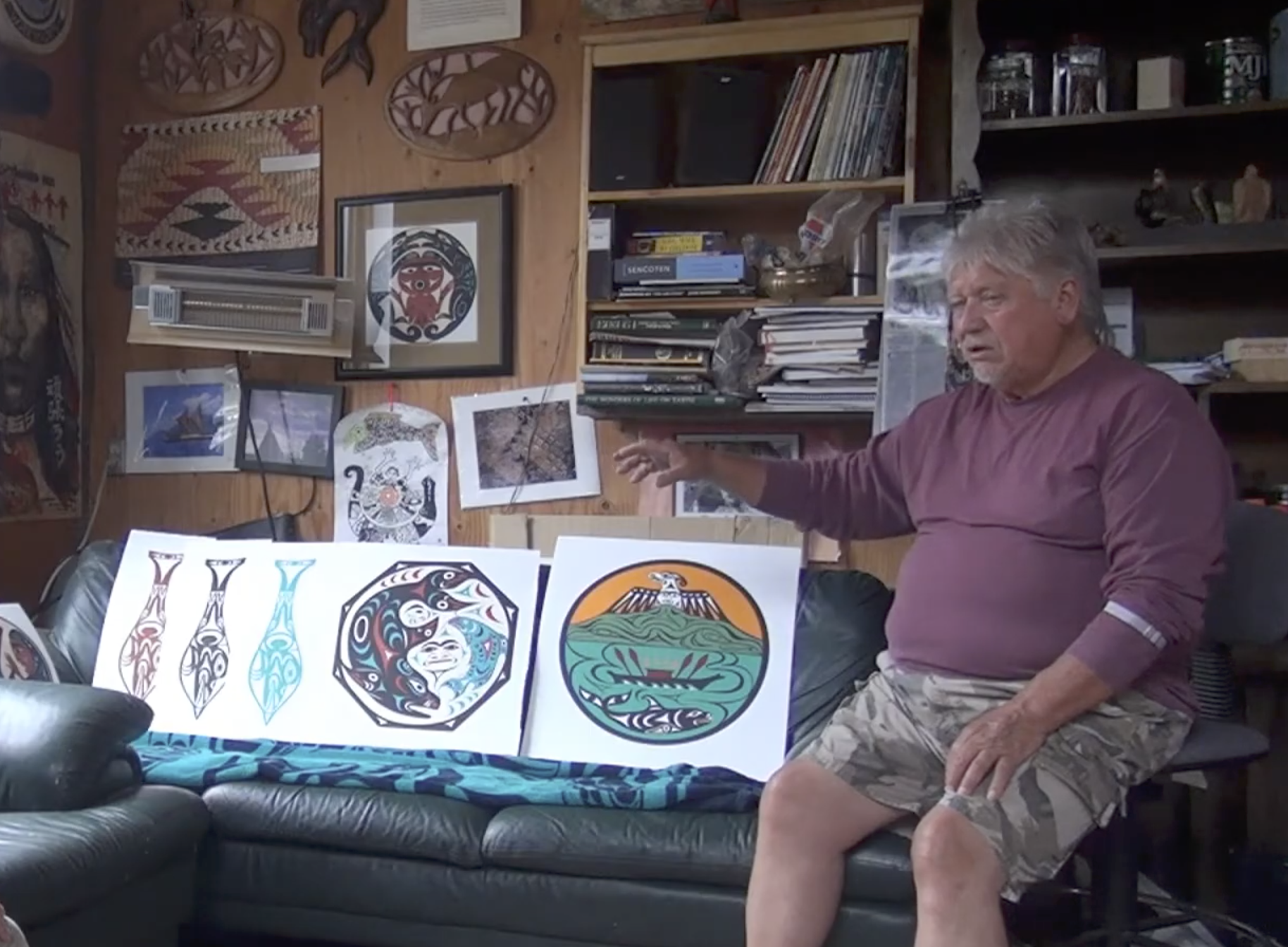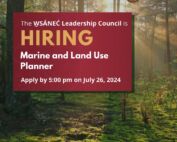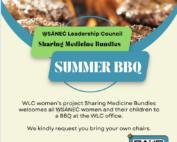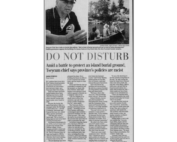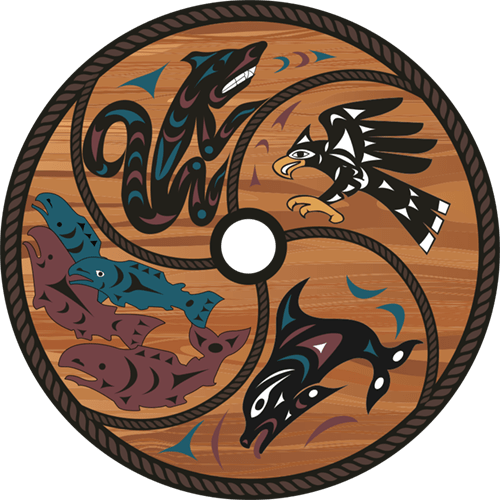W̱SÁNEĆ community members have been featured in a new website aimed at providing an Indigenous perspective on reconciliation.
Shown above: PENÁ Elliott with three student volunteer alumni who spearheaded the Taking Reconcili-Action project.
The “Taking Reconcili-Action” project began with student volunteers from the BC Heritage Fairs Society interviewing members of the W̱SÁNEĆ First Nation. The project has culminated in an accessible online resource about meaningful reconciliation, from a W̱SÁNEĆ perspective.
Several W̱SÁNEĆ community members are featured, including J’SIṈTEN (Dr. John Elliott), a well-known mentor and SENĆOŦEN teacher; Chris Paul, the contemporary Salish Artist; the work of Sarah Jay, another celebrated artist; and stories and songs from PENÁ Elliott.
W̱SÁNEĆ Elder J’SIṈTEN (Dr. John Elliott) advised and worked with the three student volunteers, providing introductions and guidance on protocols. The website documents the students’ journey as they learn more about the impact of colonialism on Indigenous people, the richness of the cultures that were almost lost, and the importance of W̱SÁNEĆ history.
Shown above: Chris Paul’s sculpture, “the gift of the sea” in ṈÁ¸ḴE¸ (Oak Bay).
Initially, the students set out to answer the following questions:
- What does it mean to be an Indigenous person living in Canada?
- How are W̱SÁNEĆ traditions and culture still alive today?
- How can non-Indigenous people better understand Indigenous peoples and create meaningful connections with them?
They wanted to learn more about how Canadian citizens can take action and implement the recommendations put forward in the Truth and Reconciliation report.
Authored by the Canadian Government and released in 2015, the report outlines 94 “calls to action” that all Canadians are urged to take to begin to repair the harm caused to Indigenous people and communities. Specifically, the recommendations call for:
- meaningful consultations
- respectful relationships
- education on the histories, languages and cultures of Indigenous peoples
- education on the negative impacts that colonialism has had on Indigenous peoples and communities
The Taking Reconcili-Ation website launched mid-August. It provides a variety of resources for teachers, students and the public on meaningful ways to take action on reconciliation.
The hope is the website will inspire and guide students, teachers and other Canadians to educate themselves and take action to repair the damage that colonialism has done to the people and the earth.
TEMOSEN (Charles Elliott), Master Carver, referencing one of his pieces, explains:
“It’s a conversation between the orca and mankind in general. And the person is trying to say to the orcas or from the seas that we’re sorry for what we’ve done to you and we’re going to try to make things right. And, that’s my hope. That’s my wish, personally, that we can try to right the wrongs.”
Shown above: TEMOSEN (Charles Elliott), Master Carver
The project was led by BC Heritage Fairs alumnus Lucas Hung. The other two alumni, Leona Lam and Kevin Butchart also conducted interviews and created the videos on the website. The youth were mentored and supported by Jennifer Iredale, Judy Dunn, Mary Campone, Meghan Wilcox, and Evan Fryer from the BC Heritage Fairs Society. The project was generously funded in part by Heritage BC’s Heritage Legacy Fund and is accessible here: https://www.takingreconcili-action.com/
RECENT POSTS
How are we doing?
TEMOSEN (Charles Elliott), Master Carver, referencing one of his pieces, explains:
“It’s a conversation between the orca and mankind in general. And the person is trying to say to the orcas or from the seas that we’re sorry for what we’ve done to you and we’re going to try to make things right. And, that’s my hope. That’s my wish, personally, that we can try to right the wrongs.”


